NBA DFS is one of the most popular daily fantasy sports and also one of the most predictable. But ironically, because of its predictability (everyone knows who the best players are) it can be more difficult than ever to remain profitable night after night. While contest selection and learning how to beat cash games are helpful, a lot of people out there struggle to find the magic elixir of how to win at daily fantasy basketball.
I was a casual player playing more lineups than I could probably handle before joining Awesemo.com two years ago and had some minor successes, top-10 finishes and a few big prizes. And like many out there, I assumed that success was repeatable because “I know sports” and had an idea of what data and players matter. But after joining the Awesemo.com team, Alex, better known as Awesemo, inundated me with lessons on how to become a better DFS player. While many focused on specifics like how to filter out statistical noise, the biggest lesson I learned is this: there is no single magic potion to win at NBA DFS. Success comes from understanding and adapting to that night’s games, players and contests.
While there isn’t some Fortnite-style potion you can take to instantly boost your success (despite the claims of lineup sellers on Twitter), there are keys to winning at NBA daily fantasy that have helped me become more effective both as a player and a content creator — tried and true ones that many pros or people passing you up in tournaments are deploying. While there may not be one magic pill to turn your fantasy fates around, there are multiple best practices and tactics to deploy night in and night out that will make you a more profitable player over the course of time. And that’s what I’m here to help walk you through today with these 12 keys to win at NBA DFS.
1) Select the Right NBA DFS Contest for You
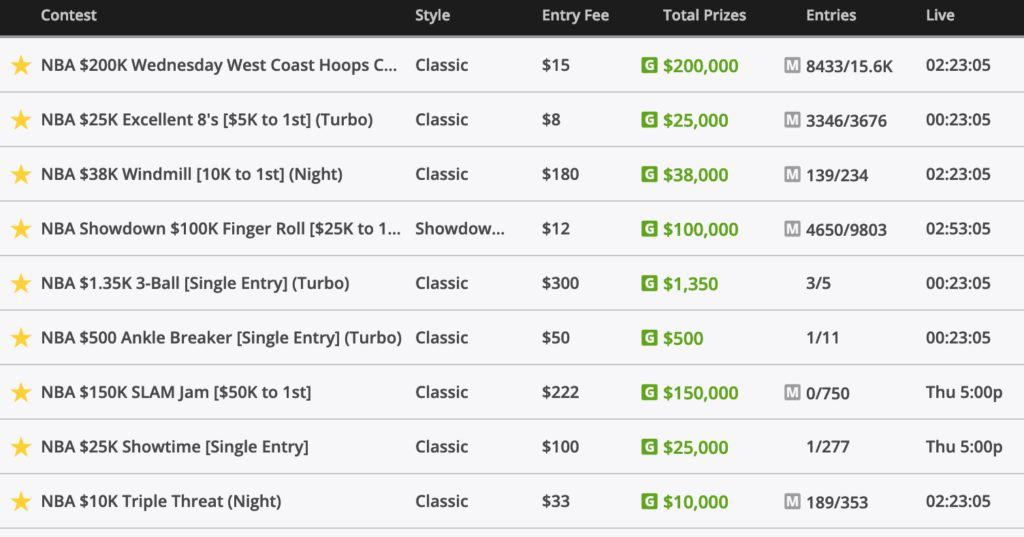
I linked the article in the first paragraph and the first thing to think about before even looking up the teams on a night’s NBA DFS slate is contest selection. Awesemo breaks down the importance of contest selection in more depth here, but the main tenet to remember when selecting your game types is that you’ll have your most success entering tournaments at the lowest possible stakes. You should be at least somewhat aware of bankroll management and utilizing a sound split between cash games and tournaments with the larger guaranteed prize pools but the biggest mistake many players make is shooting for the moon. It’s fun throwing a handful of entries into DraftKings’ big $15 entry tournaments with a $100,000 prize to first place and dreaming of your new car or paid-off student loans as long as you know the long odds you face and lowered likelihood of a return on your investment.
But the reality in those tournaments is that you’re competing against the sharpest minds in NBA DFS who are maxing out the GPP with 150 of the best possible efforts their knowledge and math can combine to create. Can you win? Of course, any outcome is possible on a night of daily fantasy. But you’ll win far more frequently if you enter a tournament which works for your bankroll, whether it’s entering a 25-cent buy-in, 20-max tournament, three-max $5-entry tournament or a single-entry tournament worth just $1, the best chance you’ll have of winning is one in which you have the exact same amount of bullets in the chamber as everyone else and at the lowest stakes possible. As the stakes rise, the skill level of the competition rises and you want to enter as much as possible at the lowest levels before jumping into the deep waters with the sharks.
2) Use Las Vegas NBA Odds
Las Vegas is key as a guiding principle of DFS, a building block from which everything else trickles down. There’s a reason sports betting is a multi-billion dollar industry and that’s because they win more often than they lose and, because of their ability to prognosticate games with such accuracy, the majority of sports bettors lose more than they win. So by using Vegas totals as a foundation for everything we do in daily fantasy, we’re establishing a baseline that’s right more often than it’s wrong. Most of our projections and rankings, as well as our Lineup Builder, include Vegas totals which you can view or pull into a spreadsheet while sites like Vegas Insider have Vegas lines, including the combined total and spread from a number of oddsmakers, as well as where the line opened in order to allow you to deduce where bettors are driving the action relative to how the line has moved.
The single most important piece of information for NBA DFS that you can deduce from sportsbooks is a team’s implied point total. If the team’s implied point total is higher than their season average, it’s a good indication that more times than not, each individual player on that team will score more points than their season average. But not only that, since points are correlated closely with assists you can expect higher than average assists totals from those players, as well. The high total may also indicate a “pace-up” game for that team, meaning more possessions leading to more of pretty much every stat — rebounds, steals, blocks and even turnovers — but more on pace below.
Pro Tip:
To calculate an individual team’s Vegas expected score, divide the game’s over/under by two and add or subtract the spread divided by two based upon what the Vegas line indicates. So when the Bulls are facing the Timberwolves with a 230-point over/under and a nine-point spread favoring the Timberwolves, the Timberwolves would have a 119.5 expected score [(230/2)+(9/2)] while the Bulls would have a 110.5 expected score [(230/2)-(9/2)]
But be careful to avoid the mistake of targeting only players from high-total games. At the end of the day, daily fantasy basketball is a resource allocation game, meaning you always need to compare a player’s performance relative to his salary on the sites. Even the worst players may be great plays if the salary is low enough.
3) Incorporate NBA Pace Statistics
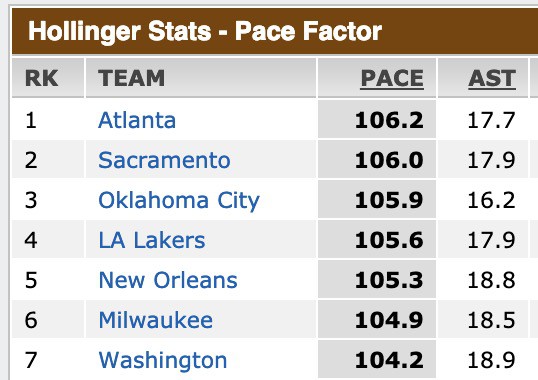
There are some people out there who feel as though pace is overvalued by the NBA DFS community and also some NBA analytics experts who think we may be looking at pace incorrectly, or at least not at as much depth as we can. But commonly, pace refers to the number of possessions a team has in an NBA game and, by proxy, how many possessions you can approximate the opposing team to have. ESPN is one of many sources to provide a chart breaking down the rankings of each NBA team’s pace, and based on the definition of pace that we’ve established, we now know that the teams with a higher number on that chart are creating more possessions per game with how quickly they run their offenses and which teams are creating fewer opportunities per game. Some teams can be highly effective at scoring despite a lower pace, like the Houston Rockets, whereas others deliberately drive the pace down to mask defensive failures, as is the case with Cleveland for most of the season.
When you hear someone say a team is in a “pace-up” matchup, that means that one team plays at an appreciably lower pace than the other and the assumption is that will create more offensive and defensive opportunities for the team with the lower pace. Similarly, a “pace-down” spot has a team with a higher pace facing one with a bottom of the league pace, and should theoretically cut down on the number of possessions they may expect in a game. This subsequently makes the game less appealing than it may otherwise be.
4) Defensive Efficiency
One big mistake I made before joining Awesemo was overvaluing individual defensive matchups, focusing on advanced analytics like Defensive Real Plus-Minus (DRPM) for players’ presumed defenders or its simpler brother Defense vs. Position. And while individual defense certainly factors into a player’s performance, the team defensive effort opposing a player is far more important…and still may be a bit overrated as a determining factor for a player’s fantasy value. An opposing team’s probability of defensive success is factored into the Vegas total so, in theory, the number has already been accounted for as part of the NBA DFS process we’ve outlined and may not need to be looked at more closely.
But I find defensive efficiency and offensive efficiency stats to be useful for how I decide which players to target on a nightly basis. Defensive efficiency is calculated by determining how many points an opposing team scores per 100 possessions (theoretically stripping some of the pace factors out of the equation) and a lower number means a better defensive team. A team like Milwaukee in the 2018-19 season may be the fifth-fastest team in terms of pace, but they’ve actually been the best at limiting opponents, holding them to just 101.6 points on 100 possessions. We’ve also seen inverse situations with offense where a team with the third-lowest pace in the league with just 99.9 possessions per game can end up scoring 111.2 points for every 100 possessions as seen by their offensive efficiency stats. When you combine these factors, you can get a better picture on how easy the scoring may be for a team. When paired with a healthy Vegas total, a picture of which games to target and which to have less exposure to becomes far more clear.
5) Be Aware of Historical Prices for DraftKings and FanDuel
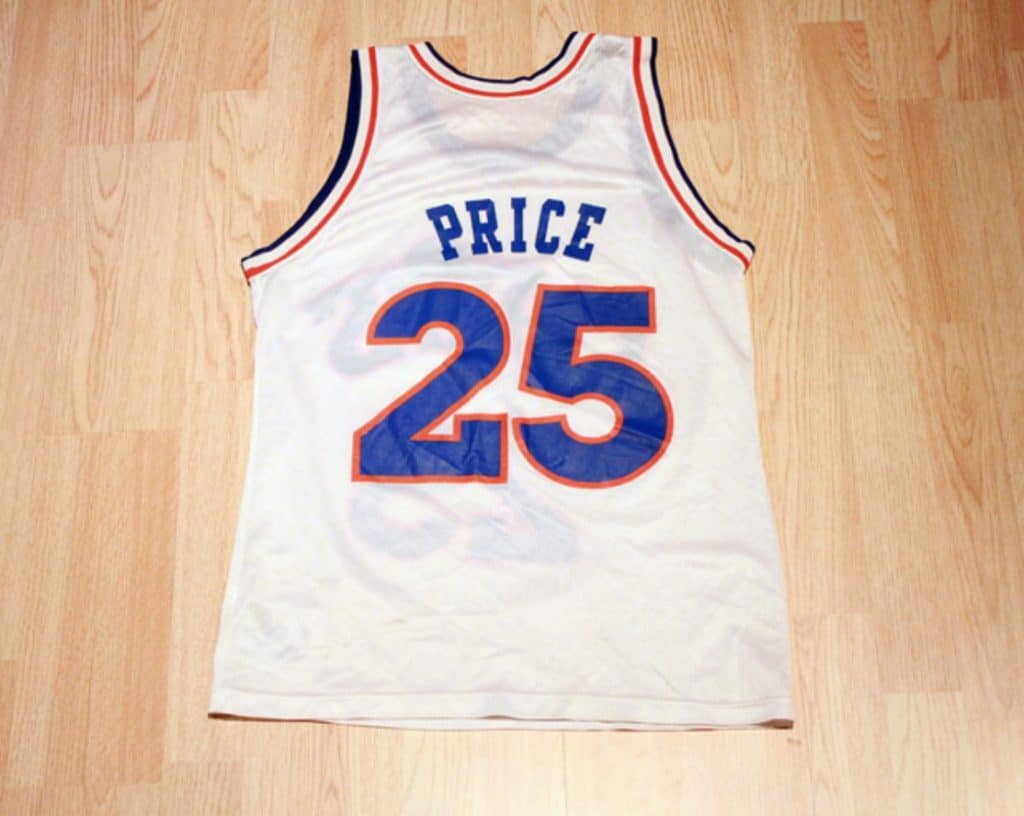
If you’ve had any success in any daily fantasy sport, you’ve likely benefited from the pricing on daily fantasy providers in some way. Perhaps it was a player being ruled out that moved a high-rebounding big into the starting lineup or a player filling in for another guy shipped out of town at the trade deadline or even a site not updating their prices accurately because of a holiday or early release of a slate.
The key is to never consider player performance in a vacuum without regard to price. By being price sensitive, you’re more aware of these fluctuations and able to capitalize on them. To win in either cash games or tournaments in NBA DFS, you need your lineup to exceed value to a degree enough to help you win. Exploit pricing inefficiencies and ease your path to achieving adequate value in your lineup by targeting players whose salaries are too low for their role or opportunity.
This is something some casual players forget, often willing to pay up and chase the recent success of a player whose price is several thousand dollars more than where they initially started. And while that isn’t always a mistake (again: roles change, players improve, it’s not all static), it is one worth being mindful of when you can typically find players who will be priced down due to recent failures but who are due for regression to the mean. Be wary of the guys overperforming and overpriced and open to the guys underperforming or at the same price who are on a run of bad luck, bad matchups or have a new positive opportunity. That’s the best way to make good use of price sensitivity in every NBA DFS situation.
6) Compile Data for Your NBA Research
This one is more important if building your own data sheets and models rather than solely relying on products like our projections and NBA rankings but overall there are a few sites out there who make it very easy for you to compile data to prepare for the day’s NBA DFS slate. Every day for me starts out with an update courtesy of Basketball Reference and I find that this particular Basketball Reference URL, which isn’t publicly visible gives me much of what I need on one page to export over to Excel to build my data for the day. I personally track Team per Game, Opponent per Game, Team per 100 Possessions, and Opponent per 100 Possessions numbers for the teams as well as Regular, per 100, and Advanced Stats for the players from Basketball Reference to build my projections and datasheets (combined with a player pool provided by a daily export of Fantasy Cruncher’s information), and augment that with minutes estimates from our Josh Engleman in our NBA projections as well as the resources noted above in the pace section. I find a holistic view of the slate to be important for how I understand the games and places to attack while for others they just trust the end result of their projections. Either way, finding trustworthy and timely updated data sources is a crucial part of any player’s process to build lineups or evaluate matchups.
7) Learn What Is Usage Rate
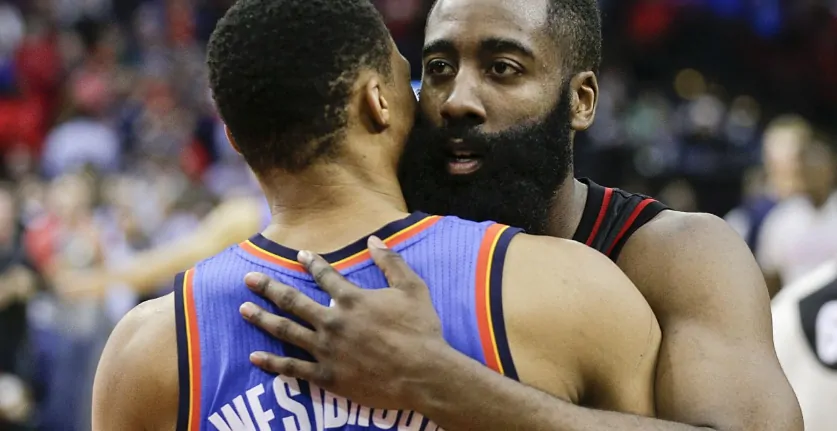
Usage rate, commonly referred to as usage, is a stat defined by the NBA as the percentage of team plays used by a player when he is on the floor and a formula that consists of (field goal attempts + possession-ending free throw attempts + turnovers) / possessions. It was created as a means of determining which players are receiving the most offensive opportunity. Bear in mind, however, that higher usage doesn’t always correlate perfectly with higher scoring. Some players have higher usage due to their possession-ending turnovers while others may be good scorers with a low usage rate because they have a high true shooting percentage or they avoid turnovers. But by targeting players with higher usage rates, we can almost guarantee that we’re rostering a player who will have the ball in his hands and accumulating stats. Much like how baseball is fundamentally a one-on-one sport with a pitcher against a batter, having a high usage rate player takes one variable out of the NBA DFS equation of basketball. It helps find a player whom we know will have access to opportunity. And with only one ball for five players, that’s going to be a huge factor in deriving fantasy value.
It’s also important to consider that usage is highly dependent on the circumstances and will change with lineups. For example, Kelly Oubre was historically heavily involved in the offense when he came off the bench for the Washington Wizards. But when he moved into the starting lineup, he found himself taking fewer shots and ultimately deriving fewer fantasy points per minute. The reason? There was far less competition for the ball when Oubre was in the second unit playing alongside Bradley Beal, John Wall and Otto Porter. Conversely, when Josh Jackson has moved into the starting lineup as a mostly competent bench scorer for the Suns, he’s typically done so for Devin Booker, a guy who shoots 18.8 times per game and turns it over 3.9 more. Booker’s absence would leave enough possessions behind, thanks to his 31.5% usage rate, that Jackson could get more shots, the other starters can get more time with the ball and everyone may become a better fantasy option as a result (even if the team is likely worse due to a star coming out of the lineup). Usage is the through line for how every NBA team operates and achieves offensive success or failure and a key to think about as a function of the players you roster in NBA DFS.
8) NBA Projections
As a premium member of Awesemo.com, you currently get access to NBA projections created by Josh Engelman and our staff and Awesemo’s letter-grade player rankings. Awesemo previously broke down how to make projections for DFS, a worthwhile read to learn more about this topic in depth. But the 30-mile view on how to make them would begin with the “implied total” that we created in the Las Vegas section to infer the pace, using players’ and teams’ historical performances to project the statistics for the game and combining these results with non-duplicative supplementary advanced analytics to maximize the predictiveness of the projection formula. There are projections that are better than others (and obviously I would co-sign on ours at Awesemo), but it’s important to understand what goes into each of them so you understand why one site may project James Harden for more than another on any given day.
The most important thing is to have projections you believe in — whether they’re created by you, from a site you trust or even an average of multiple sources — and to turn to them day after day. That consistency is what will hopefully allow the intrinsic variance of each NBA DFS slate to level out for you, resulting in you putting your best foot forward night after night rather than overly tweaking and bouncing to different projection resources to change your potential range of outcomes.
9) Figure Out What Is “Good Chalk” vs. “Bad Chalk”
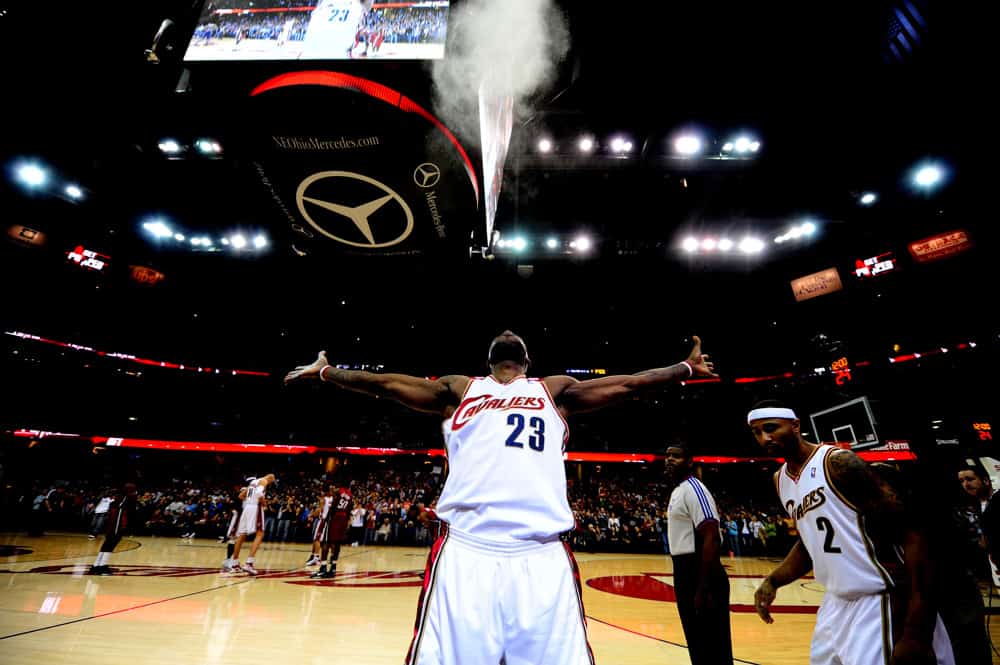
As mentioned in the Price Sensitivity section, there will sometimes be situations that a player’s price is egregiously beneath what it should be relative to how their role and opportunity projects and a situation like that will often result in a player’s popularity rising, becoming a “chalk” play, aka one that many players are expected to have in their lineups. There are other times that because of a higher-than-expected Vegas total and players with prices lower than it seems like they should have that those players also become chalk. For whatever the case may be, determining which plays are “good chalk” and which are “bad chalk” in NBA DFS can be as important as anything in the game.
There are arguments to be made for never playing a popular play to differentiate your lineups to increase your odds of winning a tournament. But because of how ownership works, you could have a lineup with seven out of eight spots filled with highly popular plays and only one lower owned play and be perfectly fine in a tournament. That’s where good chalk comes in. A scoring-dependent player like the Kelly Oubre situation mentioned in the Usage Rate section who projects to be one of the highest-owned plays on the slate despite his changing role portending a material impact on his fantasy opportunity? That could easily be a bad chalk situation even if only a quarter of the field is on him. But one where Oklahoma City’s Steven Adams is ruled out and Nerlens Noel, a 1.1 fantasy-points-per-minute player at a near-minimum price, moves into the starting lineup, he could end up 80% owned and still be good chalk.
It’s all relative to where the rest of the slate is; if this theoretical version of Noel is playing on a slate where Joel Embiid, Karl-Anthony Towns and Nikola Jokic are all available and playing teams who could be easily gobbled up by them, Noel is less of a good play. But generally, a productive per-minute player stepping into an opportunity with some meat on the bone will be a good chalk play and the ones that feel flimsier but have picked up a ton of projected ownership throughout the course of a day because of being discussed ad nauseum across the industry will be more likely to end up bad chalk.
The key to differentiating between good chalk and bad chalk for NBA DFS lies in that player’s probability of success. In other words, what’s the chance of that player ending up as the best play versus every other player at his position? If it far exceeds projected ownership that is a clear indication he is good chalk. Similarly, if a player’s probability of being tops at his position is significantly lower than projected ownership, it’s safe to avoid him. When his projected ownership and probability of success approximately align, decisions should be made in the context of your lineup. If you’re already playing lots of popular players, the best move is to avoid getting even more chalk in your lineup. But if the rest of your lineup consists of off-the-wall picks, adding a little chalk is beneficial. Which dovetails nicely into…
10) Ownership Projections
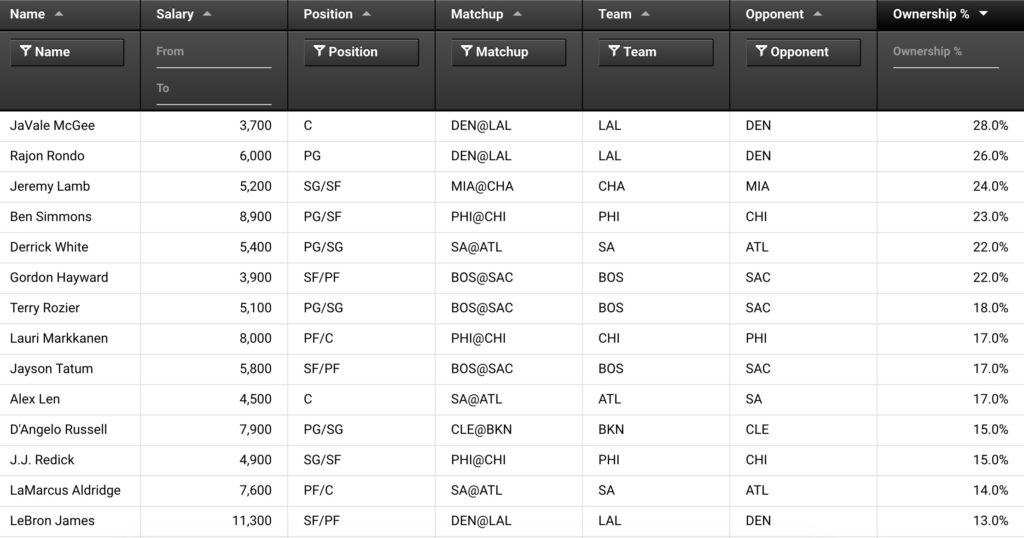
Having reliable ownership projections to make lineup decisions when you construct an NBA DFS lineup is huge. The value of ownership projections comes not only from being able to identify good chalk from bad chalk, they also enable you to assess the overall risk profile of your lineup. For example, is your lineup so popular that when you win you’re going to have to split the top prize a hundred different ways? Or is your lineup so filled with contrarian picks that you are needlessly taking on additional risk?
Pro Tip:
Multiply the expected ownership of each player in a lineup together to estimate the “ownership product” of your lineup, i.e. what percentage of lineups in a tournament will likely look exactly the same as yours. If you roster eight players who each have 50% expected ownership, your ownership product would be .0039, meaning that in a tournament with 100,000 entries you could expect 390 other entries to have the same lineup as you.
It also goes without saying that a primary benefit of NBA DFS ownership projections is finding players projected for lower ownership who are undervalued by the marketplace. Having just one player in a player pool whom you expect to exceed value that the rest of the industry is sleeping on can balance out an entire lineup full of popular plays that the rest of the field of players are keyed in on. But don’t forget that ownership projections can also be critical in evaluating the construction of your roster.
11) Be Aware of Inefficiencies
We’ve established most of the core tenets of building lineups for NBA DFS, but many of them tie into one key theme: exploit inefficiencies as best you can. When Kyrie Irving was ruled out for the Celtics, even at the last minute, many people recognized that Terry Rozier became a good play because he was the guy who started each time Irving missed a game. But further, less apparent inefficiencies opened up from Irving’s absence that went beyond the titular point guard role. For example, Marcus Morris went from an 18.5% usage rate to a 24.2% usage rate, which boosted his prospects from 0.89 fantasy points per minute with Irving to 1.06 fantasy points per minute in court time without him. There were comparable boosts for guys like Gordon Hayward, Jaylen Brown and Al Horford, as well. Many times, there’s a trickle-down effect from absences that NBA DFS players miss and it can go far beyond the 1:1 swap of Starting Player Y replaced by Bench Player Z. A resource like NBA.com’s On/Off Comparison Tool can help you make these integral pivots when players miss a game.
Other inefficiencies to monitor include:
–Price differences between daily fantasy sites: A guy with a steeper price on one NBA DFS site is more valuable on the site in which he’s cheaper.
–Price changes: A player’s price dropping because his shot hasn’t fallen is a typical situation that levels out and results in bounce-back games, while a player’s price rising due to an unsustainable hot streak can be an obvious situation to avoid.
–Low ownership: A player projecting well for you that isn’t particularly highly owned may have a reason why that’s the case, like a blowout risk. But your belief in their opportunity while the rest of the field isn’t on them gives you an advantage if you’re right.
–Late injury news: If you monitor news up to lock as we do every day at Awesemo.com, the closer to a slate’s lock that a player is ruled out opens up a significant and sometimes crucial opportunity. Pivoting to a player whose opportunity increased greatly because of a late injury scratch can be a very fruitful way to get ahead of less attentive players.
12) Proper Lineup Construction
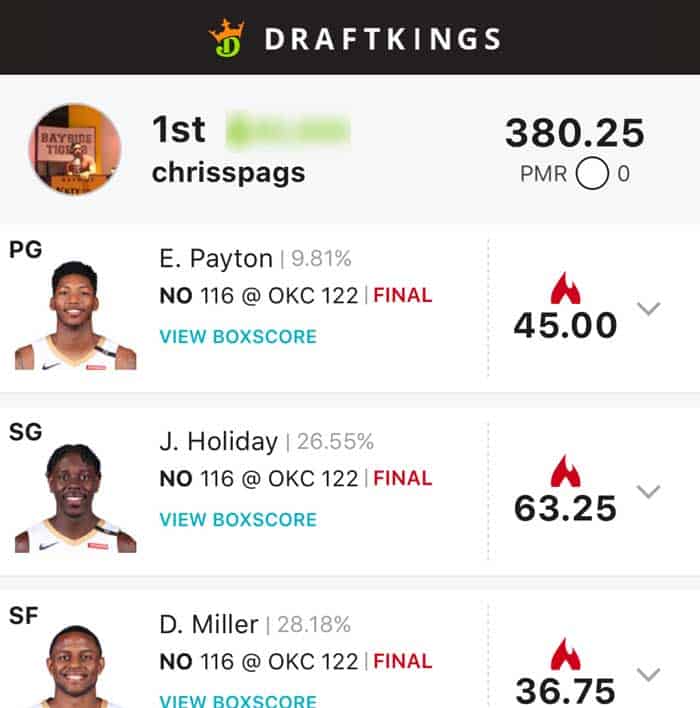
Proper lineup construction is a final key once you’ve tied everything else together. And it extends across a variety of situations. Proper lineup construction means not playing a player and his direct backup in the same lineup in most situations because of the likelihood that they draw production or minutes away from each other. It can also entail attempting to stack players from the opposite team with players on your side to extract the full fantasy potential from a game (because if one team is having an outlier performance, the odds are greater that at least one player on the other team is having an outlier performance as well). On a smaller slate, proper lineup construction can mean attempting to stack up multiple players from both sides of a single game in the hopes that their matchup is the one that has the most fantasy value to unearth due to a high scoring game or even a fortunate extra period of play in overtime, an approach that can be both contrarian relative to a tournament field but sound because of a lofty Vegas total that indicates more scoring expected.
There are many permutations to what proper lineup construction entails in NBA DFS, but the overall goal is to ensure that your lineup is as fundamentally sound as possible, not only avoiding players that correlate poorly, but also baking in the best practices we’ve discussed above and will continue to elaborate on in all of the pieces of written and video content that our team creates. With experience and heeding some of the keys to NBA DFS within this article, you’ll find yourself achieving lineups that are better each day and closer to the personal nirvana that is proper lineup construction … and hopefully better results to show for it in your bankroll.
Check out our NBA content schedule to learn more about when you can find our daily fantasy basketball written and video pieces and use the promo code NBAKEYS to get 50% off your first month of any monthly membership at Awesemo.com.

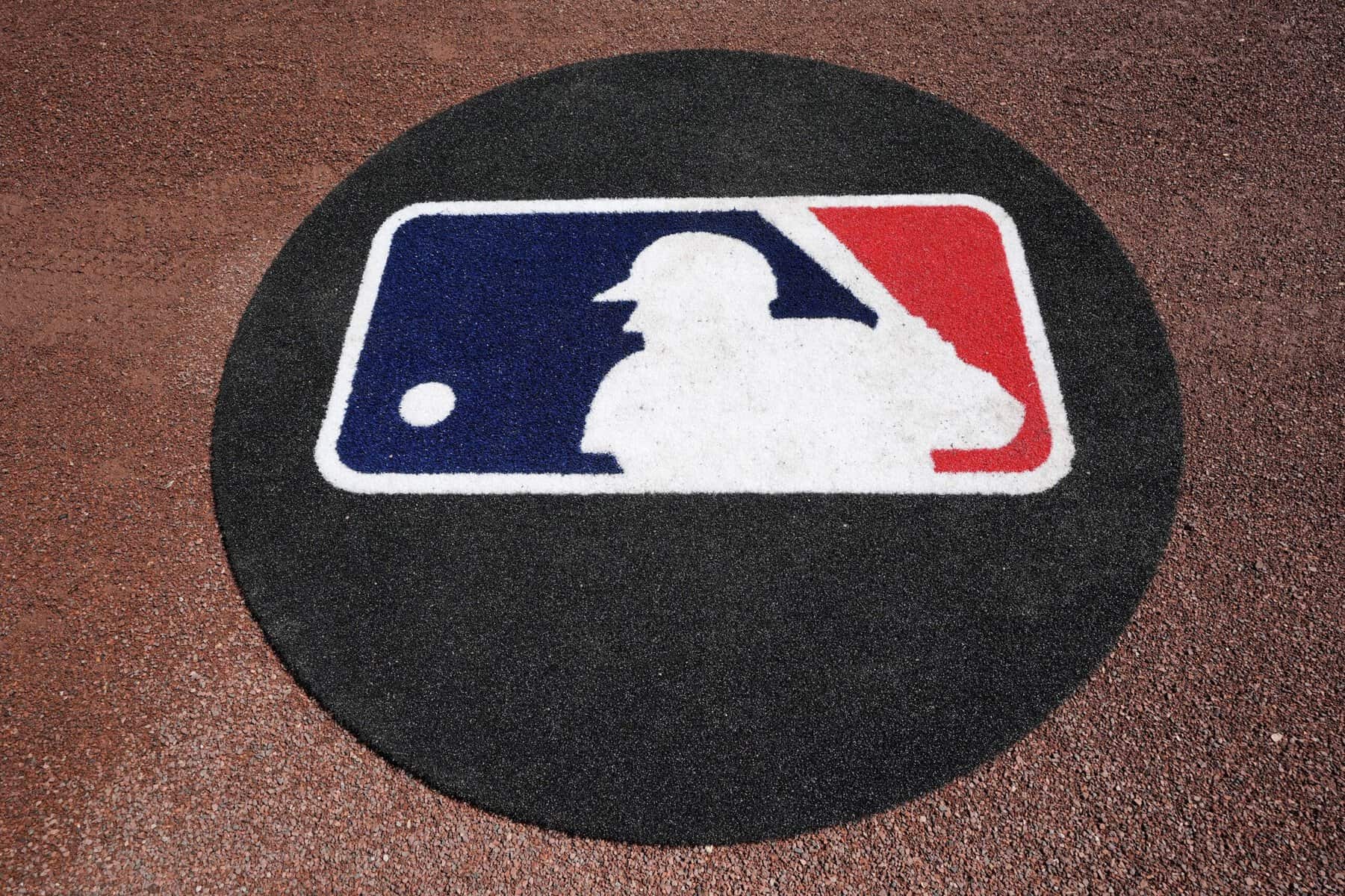
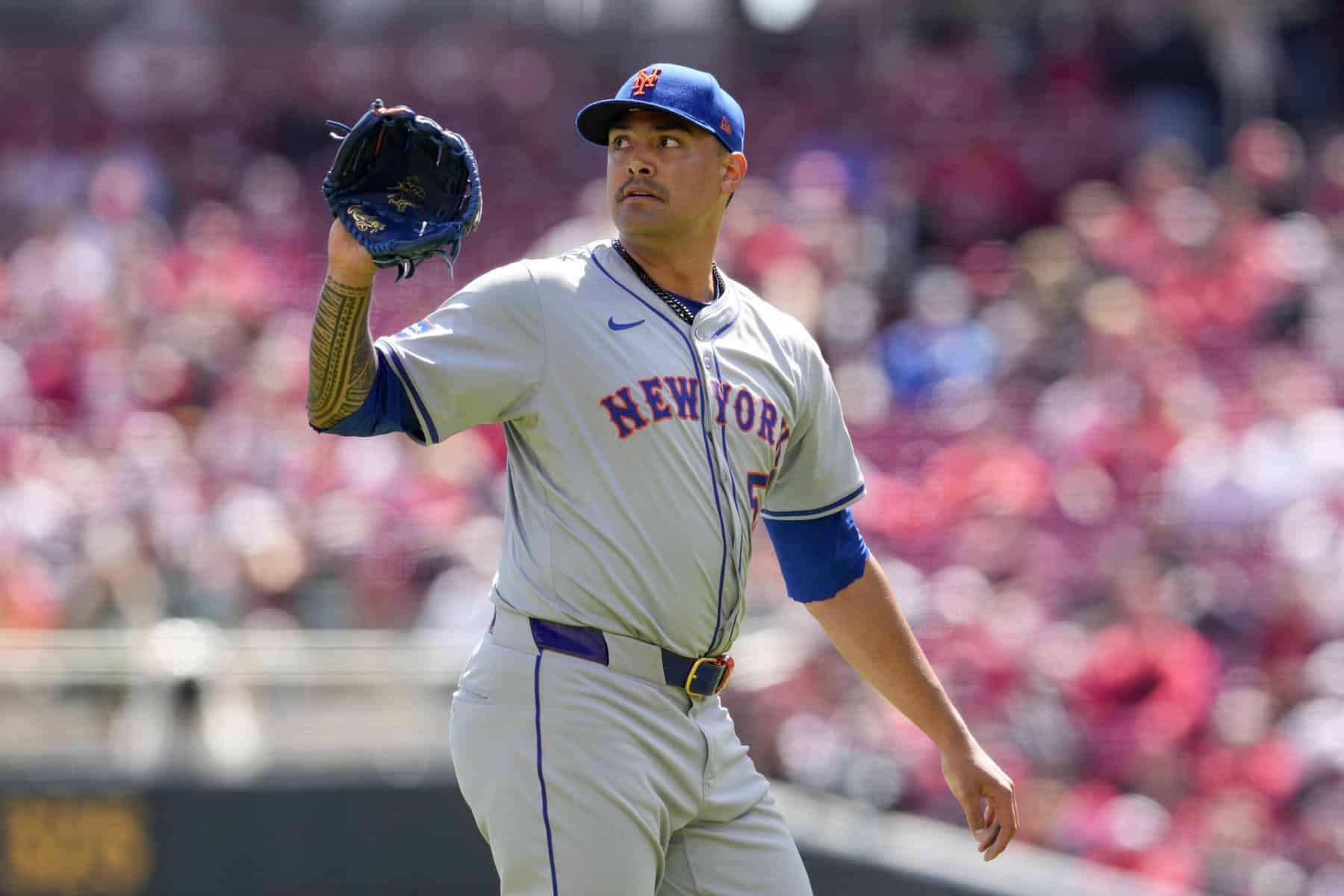

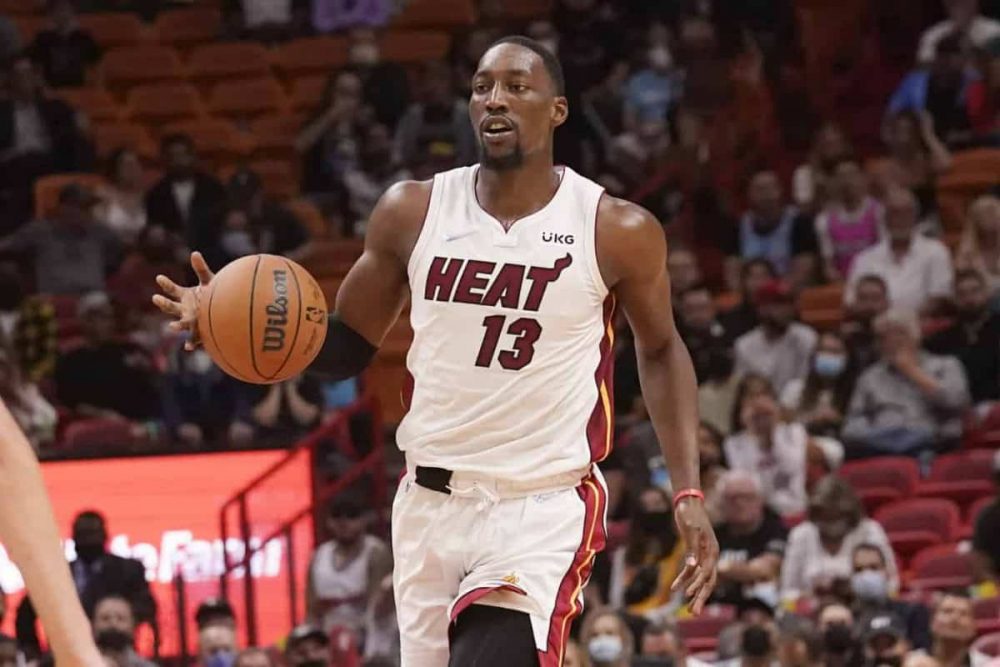

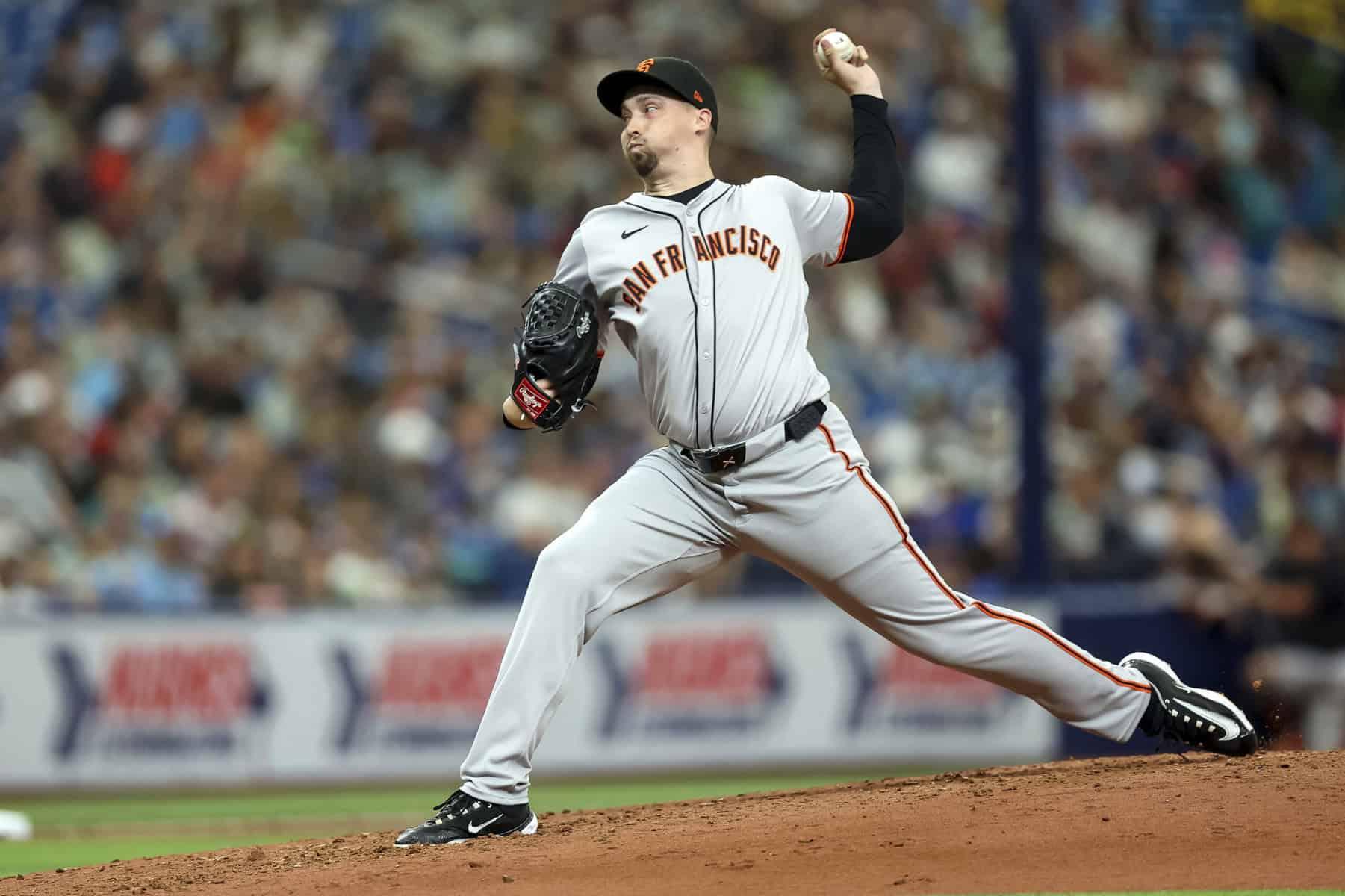


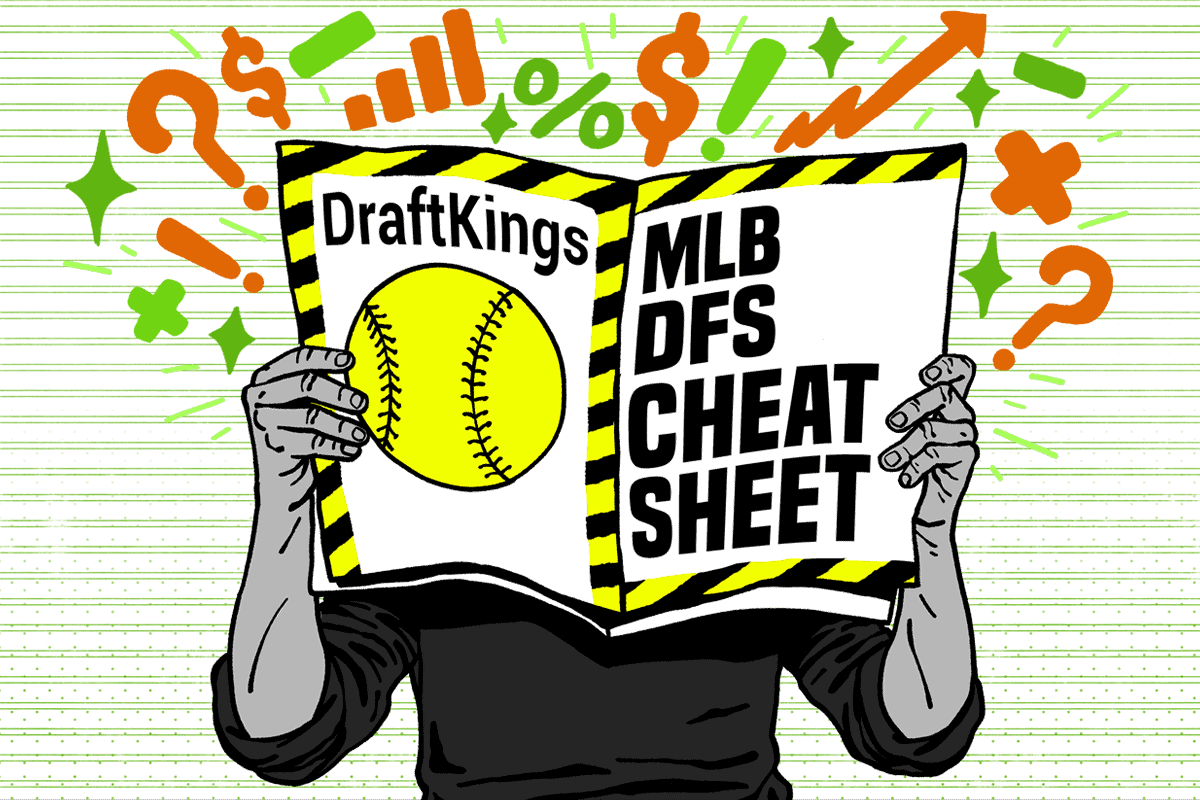

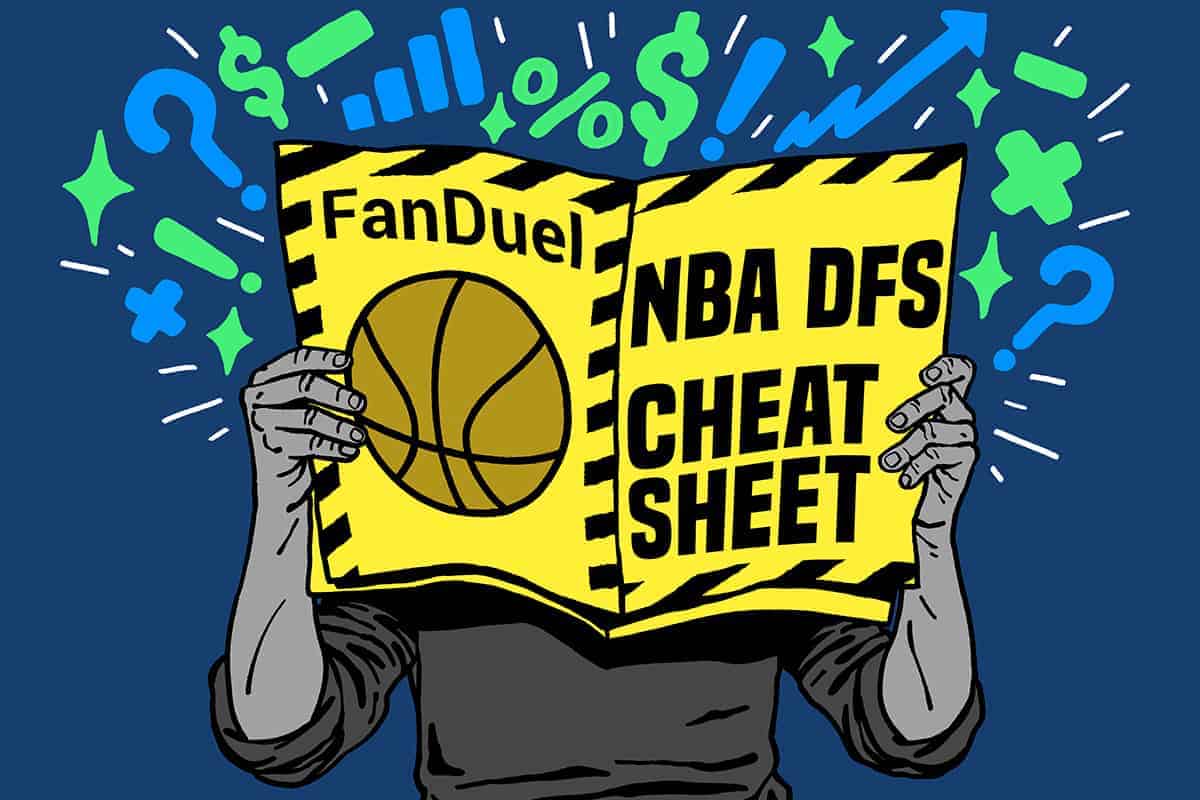






Great write up, thank you.
glad to help, thanks for reading R&B star Carl Thomas!
Lol you’re welcome. Hear it often.
P.s I’m never emotional and hate summer rain haha